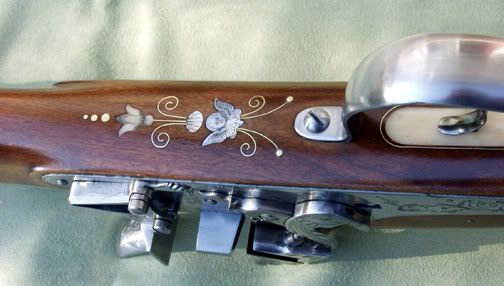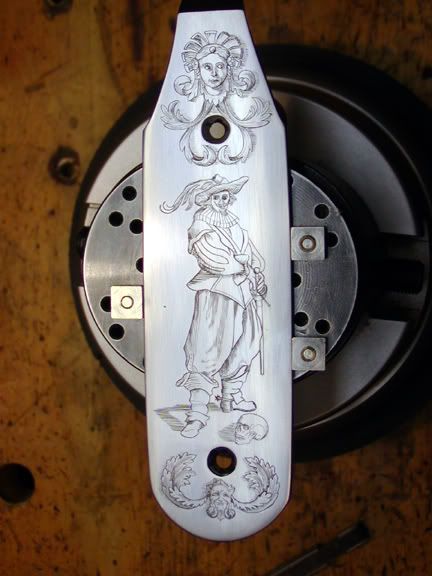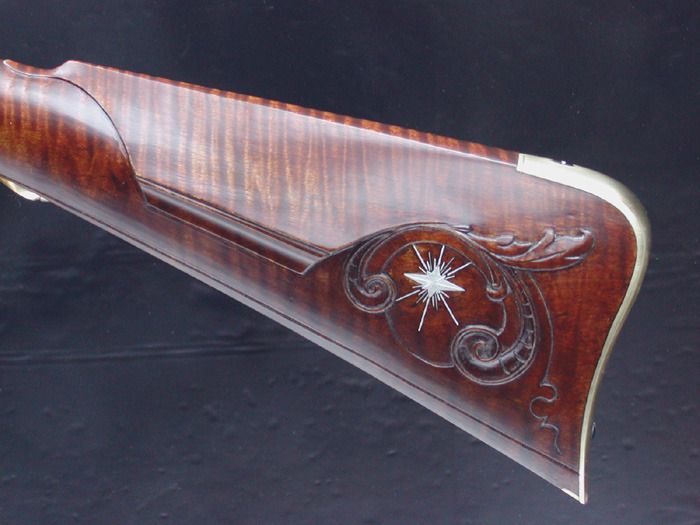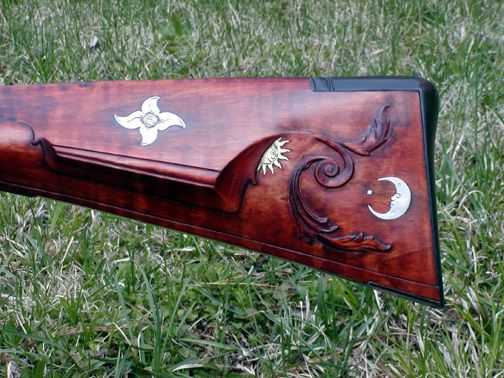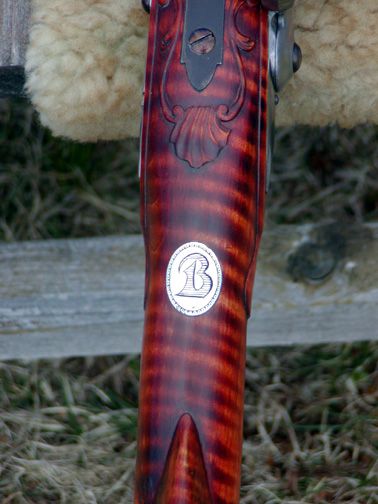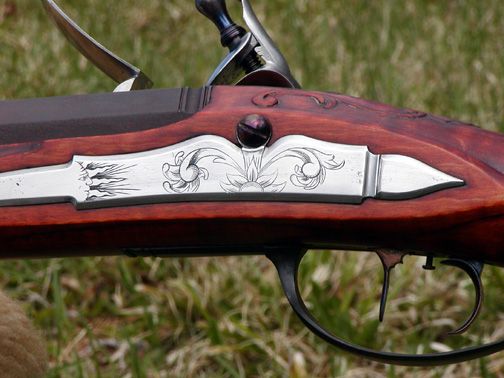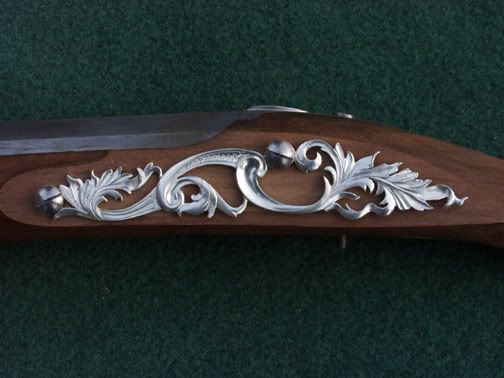Hi,
You ask very good questions. The term “rococo” is derived from “rocaille”, which means rock or stone work. Rococo specifically refers to a type of shell, a feature often incorporated in rococo carvings. French rococo designs held sway in France during the first half of the 18th century after Louis XIV died (1718). The German version of rococo lasted much longer and is the origin of much of the art on long rifles. To understand “rococo” it helps if you think a little about music. Preceding it was the “baroque” period, which was characterized by symmetry, naturalistic shapes, dramatic shading, bold massive shapes, and precision. Think of the majesty and pompousness of Handel’s music or the mathematical precision of Bach’s. Rococo defied the formality and symmetry of baroque and introduced sweeping asymmetric designs that were light, flowing, indicating movement. Think of Mozart’s music. Shapes were fanciful, C and S-scrolls and foliage were asymmetric, tapered, flared, stretched, and folded. The feeling was exuberant, not heavy or pondering. American “rococo” was just a provincial variant of German rococo and incorporated the same asymmetry and movement. It was less ornate and busy, simpler and often more open. In addition, American makers often incorporated local folk art among the foliage, shells, and scrolls. The rules or guides you seek are simply:
1. asymmetry
2. movement
3. scrolls, foliage, and shapes like shells that are folded, flexible, extended, vary in thickness etc.
4. incised carving that highlights shapes and suggests movement
Rococo is well suited to carved and engraved firearms because so many of the spaces on guns are asymmetric, tapered, and curved.
Below are some photos of my work. The first group show the symmetry and drama of baroque.
The next group show the lightness, movement, asymmetry, and whimsy of rococo:
dave




